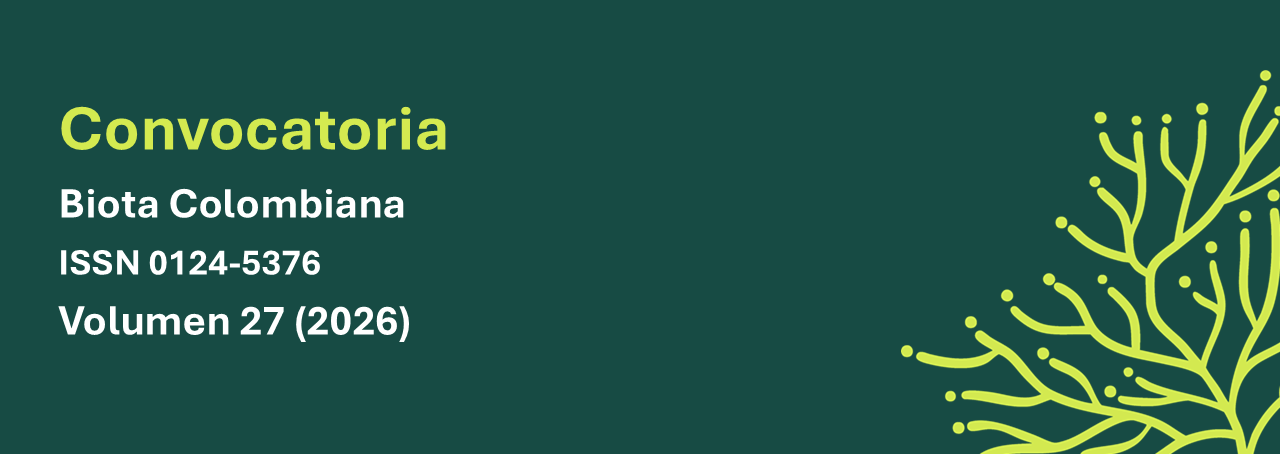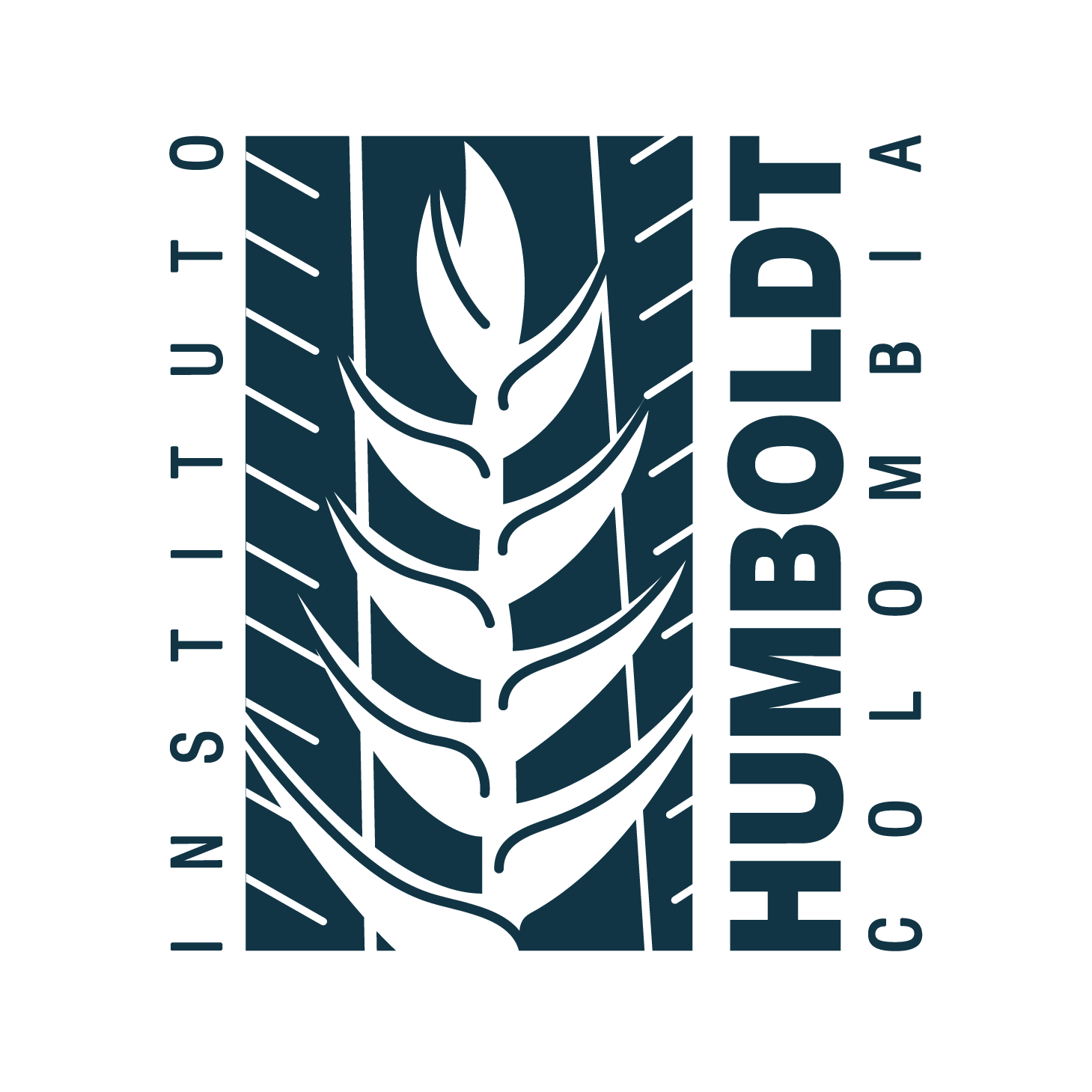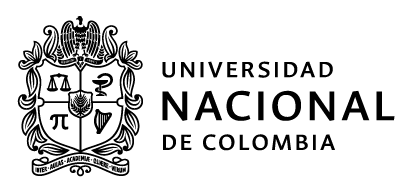Abstract (en):
Forest cover in Latin America has decreased in recent years due to the expansion of agriculture, forestry, and livestock ranching, exacerbating human-wildlife conflicts (HWC). This study analyzes 22 articles about HWC in Latin America related to the jaguar (Panthera onca) and the Andean bear (Tremarctos ornatus), two symbolic species affected by hunting in retaliation for damage caused to livestock or crops. It identifies the countries, problems caused, and the strategies proposed or applied to resolve them, and determines their effectiveness. Ecuador was the country with the most publications. The most frequent problem for both species was attacks on livestock. The most common strategy applied by communities to manage the HWC was hunting and killing the animal, and the most common strategy proposed by the authors was conservation education. More research is needed on HWC in Latin America, especially on evaluating the effectiveness of strategies to manage them, to better understand the problem and implement effective management measures that prevent negative impacts on people and wildlife.
Abstract (es):
Los bosques en Latinoamérica han disminuido en los últimos años debido a la expansión de la agricultura, la silvicultura y la ganadería, exacerbando los conflictos entre humanos y la vida silvestre (HWC). Esta investigación analiza 22 artículos sobre HWC en Latinoamérica, relacionados con el jaguar (Panthera onca) y el oso andino (Tremarctos ornatus), dos especies representativas que han sido afectadas por la caza en represalia por los daños causados al ganado o a los cultivos. Se identificaron los países, problemas y estrategias propuestas y/o aplicadas para resolverlos, así como su efectividad. Ecuador fue el país con más publicaciones. El problema más frecuente para ambas especies fue ataques al ganado. La estrategia más común aplicada por las comunidades para gestionar el HWC fue la caza, y la estrategia más propuesta por los autores fue la educación para la conservación. Es necesario profundizar más sobre la evaluación de la efectividad de las estrategias para gestionar los HWC, para comprender mejor el problema e implementar medidas de manejo efectivas que prevengan impactos negativos en las personas y en la vida silvestre.
Keywords:
cultivos, depredación, ganado, grandes felinos, HWC, oso de anteojos (es)
References
Albarracín, V., & Aliaga-Rossel, E. (2018). Bearly Guilty: Understanding Human-Andean Bear Conflict Regarding Crop Losses. Ethnobiology Letters, 9(2) 2. https://doi.org/10.14237/ebl.9.2.2018.1300
Alvarez, H. G., & Zapata-Rios, G. (2022). Do social factors influence perceptions of the jaguar Panthera onca in Ecuador? Oryx, 56(2), 308-315. https://doi.org/10.1017/S003060532000054X
Amit, R., & Jacobson, S. K. (2017). Understanding rancher coexistence with jaguars and pumas: A typology for conservation practice. Biodiversity and Conservation, 26(6), 1353-1374. https://doi.org/10.1007/s10531-017-1304-1
Andrade, M. G., Espinoza, G. V., & Moncada, J. A. (2019). Percepción de actores clave acerca del conflicto ser humano-oso andino en la parroquia Plaza Gutiérrez, Íntag, Imbabura, Ecuador. Mammalia Aequatorialis, 1, 43-50. https://doi.org/10.59763/mam.aeq.v1i.6
Aurich-Rodriguez, F., Piana, R. P., Appleton, R. D., & Burton, A. C. (2022). Threatened Andean bears are negatively affected by human disturbance and free-ranging cattle in a protected area in northwest Peru. Mammalian Biology, 102(1), 177-187. https://doi.org/10.1007/s42991-021-00217-z
Ballejo, F., Plaza, P., Di Virgilio, A. S., Lucherini, M., Gaspero, P. G., Guerisoli, M. de L. M., Novaro, A. J., Funes, M., & Lambertucci, S. A. (2022). Unravelling negative interactions between humans, mammalian carnivores and raptors in South America. Ecología Austral, 32(2), 599-820. https://doi.org/10.25260/EA.22.32.2.1.1843
Baruch-Mordo, S., Breck, S. W., Wilson, K. R., & Broderick, J. (2011). The Carrot or the Stick? Evaluation of Education and Enforcement as Management Tools for Human-Wildlife Conflicts. PLOS ONE, 6(1), e15681. https://doi.org/10.1371/journal.pone.0015681
Bazantes-Chamorro, J., Revelo-Morán, N., & Moncada-Rangel, J. (2018). Conflicto ser humano-oso andino (Tremarctos ornatus) en San Francisco de Sigsipamba, Provincia de Imbabura, Ecuador. Revista Mexicana de Mastozoología (Nueva Época), 8(2), 81-95. https://doi.org/10.22201/ie.20074484e.2018.1.2.260
Braczkowski, A. R., O’Bryan, C. J., Lessmann, C., Rondinini, C., Crysell, A. P., Gilbert, S., Stringer, M., Gibson, L., & Biggs, D. (2023). The unequal burden of human-wildlife conflict. Communications Biology, 6(1), 182. https://doi.org/10.1038/s42003-023-04493-y
Campos-Neto, M. F., Garrone Neto, D., & Haddad, V. (2011). Attacks by Jaguars (Panthera onca) on Humans in Central Brazil: Report of Three Cases, with Observation of a Death. Wilderness & Environmental Medicine, 22(2), 130-135. https://doi.org/10.1016/j.wem.2011.01.007
Can, Ö. E., D’Cruze, N., Garshelis, D. L., Beecham, J., & Macdonald, D. W. (2014). Resolving Human-Bear Conflict: A Global Survey of Countries, Experts, and Key Factors. Conservation Letters, 7(6), 501-513. https://doi.org/10.1111/conl.12117
Caruso, F., Perovic, P. G., Tálamo, A., Trigo, C. B., Andrade-Díaz, M. S., Marás, G. A., Saravia, D., Sillero-Zubiri, C., & Altrichter, M. (2020). People and jaguars: New insights into the role of social factors in an old conflict. Oryx, 54(5), 678–686. https://doi.org/10.1017/S0030605318001552
Ceballos, G., Ehrlich, P. R., Barnosky, A. D., García, A., Pringle, R. M., & Palmer, T. M. (2015). Accelerated modern human-induced species losses: Entering the sixth mass extinction. Science Advances, 1(5), e1400253. https://doi.org/10.1126/sciadv.1400253
Chinchilla, S., van den Berghe, E., Polisar, J., Arévalo, C., & Bonacic, C. (2022). Livestock-Carnivore Coexistence: Moving Beyond Preventive Killing. Animals, 12(4), 479. https://doi.org/10.3390/ani12040479
De la Torre, J. A., Camacho, G., Arroyo-Gerala, P., Cassaigne, I., Rivero, M., & Campos-Arceiz, A. (2021). A cost-effective approach to mitigate conflict between ranchers and large predators: A case study with jaguars in the Mayan Forest. Biological Conservation, 256, 109066. https://doi.org/10.1016/j.biocon.2021.109066
Debebe, B., Senbeta, F., Teferi, E., Diriba, D., & Teketay, D. (2023). Analysis of Forest Cover Change and Its Drivers in Biodiversity Hotspot Areas of the Semien Mountains National Park, Northwest Ethiopia. Sustainability, 15(4), 3001. https://doi.org/10.3390/su15043001
Dickman, A. J. (2010). Complexities of conflict: The importance of considering social factors for effectively resolving human-wildlife conflict. Animal Conservation, 13(5), 458-466. https://doi.org/10.1111/j.1469-1795.2010.00368.x
Dickman, A. J., & Hazzah, L. (2016). Money, Myths and Man-Eaters: Complexities of Human-Wildlife Conflict. In F. M. Angelici (Ed.), Problematic Wildlife: A Cross-Disciplinary Approach (pp. 339-356). Springer International Publishing. https://doi.org/10.1007/978-3-319-22246-2_16
Economic Commission for Latin America and the Caribbean. (2021). Forest loss in Latin America and the Caribbean from 1990 to 2020: The statistical evidence. https://www.cepal.org/en/publications/47152-forest-loss-latin-america-and-caribbean-1990-2020-statistical-evidence
Escobar-Lasso, S., Cepeda-Duque, J., Gil-Fernández, M., & González-Maya, J. (2020). Is the Banana Ripe? Andean Bear-Human Conflict in a Protected Area of Colombia. Human-Wildlife Interactions, 14(2), 200-215. https://doi.org/10.26077/6e5e-089e
Espinosa, S., & Jacobson, S. K. (2012). Human-Wildlife Conflict and Environmental Education: Evaluating a Community Program to Protect the Andean Bear in Ecuador. Journal of Environmental Education, 43(1), 55-65. http://dx.doi.org/10.1080/00958964.2011.579642
Food and Agriculture Organization. (2015). Sustainable Wildlife Management and Human-Wildlife Conflict. https://www.fao.org/documents/card/fr/c/I4893E/
Figueroa, J. (2015). Interacciones humano-oso andino Tremarctos ornatus en el Perú: consumo de cultivos y depredación de ganado. Therya, 6(1), 251-278. https://doi.org/10.12933/therya-15-251
Fort, J. L., Nielsen, C. K., Carver, A. D., Moreno, R., & Meyer, N. F. V. (2018). Factors influencing local attitudes and perceptions regarding jaguars Panthera onca and National Park conservation in Panama. Oryx, 52(2), 282-291. https://doi.org/10.1017/S0030605317001016
Frank, B., Glikman, J. A., & Marchini, S. (Eds.). (2019). Human-Wildlife Interactions: Turning Conflict into Coexistence. Cambridge University Press. https://doi.org/10.1017/9781108235730
Garrido-Corredor, A. M., Cottyn, H., Martínez-Medina, S., Wheatley, C. J., Sanchez, A., Kirshner, J., Cowie, H., Touza-Montero, J., & White, P. C. L. (2021). Oso, Osito ¿A Qué Venís? Andean Bear Conflict, Conservation, and Campesinos in the Colombian Páramos. Sustainability, 13(19), 10489. https://doi.org/10.3390/su131910489
Gore, M. L., Knuth, B. A., Curtis, P. D., & Shanahan, J. E. (2006). Education Programs for Reducing American Black Bear-Human Conflict: Indicators of Success? Ursus, 17(1), 75-80.
Hernández, P. (2016, October 27). Food shortages fueling bear-human conflicts in Bolivian Andes. Mongabay Environmental News. https://news.mongabay.com/2016/10/food-shortages-fueling-bear-human-conflicts-in-bolivian-andes/
Iñiguez-Gallardo, V., Guerrero, A., & Ordóñez-Delgado, L. (2021). Análisis exploratorio sobre conflictos fauna silvestre-gente en la Reserva Natural Tumbesia La Ceiba, área núcleo de la Reserva de Biosfera Binacional Ecuador-Perú “Bosques de Paz”. Revista Peruana de Biología, 28(1), e17665. https://doi.org/10.15381/rpb.v28i1.17665
International Union for Conservation of Nature. (2016a). Panthera onca: Quigley, H., Foster, R., Petracca, L., Payan, E., Salom, R. & Harmsen, B.: The IUCN Red List of Threatened Species 2017: e.T15953A123791436 [dataset]. https://doi.org/10.2305/IUCN.UK.2017-3.RLTS.T15953A50658693.en
International Union for Conservation of Nature. (2016b). Tremarctos ornatus: Velez-Liendo, X. & García-Rangel, S.: The IUCN Red List of Threatened Species 2017: e.T22066A123792952 [dataset]. https://doi.org/10.2305/IUCN.UK.2017-3.RLTS.T22066A45034047.en
International Union for Conservation of Nature. (2023). IUCN SSC guidelines on human-wildlife conflict and coexistence (1st ed.). IUCN. https://doi.org/10.2305/YGIK2927
Jampel, C. (2016). Cattle-based livelihoods, changes in the taskscape, and human-bear conflict in the Ecuadorian Andes. Geoforum, 69, 84-93. https://doi.org/10.1016/j.geoforum.2016.01.001
Karanth, K. K., Naughton-Treves, L., DeFries, R., & Gopalaswamy, A. M. (2013). Living with Wildlife and Mitigating Conflicts Around Three Indian Protected Areas. Environmental Management, 52(6), 1320–1332. https://doi.org/10.1007/s00267-013-0162-1
Knox, J., Negrões, N., Marchini, S., Barboza, K., Guanacoma, G., Balhau, P., Tobler, M. W., & Glikman, J. A. (2019). Jaguar Persecution Without “Cowflict”: Insights from Protected Territories in the Bolivian Amazon. Frontiers in Ecology and Evolution, 7, 494. https://www.frontiersin.org/articles/10.3389/fevo.2019.00494
Macias Rendon, F. P., & Vera Solorzano, D. R. (2023). Conflictos fauna silvestre-humanos en el área de influencia al Bosque Protector Cordillera Chongón Colonche. Revista Científica Arbitrada Multidisciplinaria PENTACIENCIAS, 5(3), 745-763. https://doi.org/10.59169/pentaciencias.v5i3.569
Madden, F., & McQuinn, B. (2014). Conservation’s blind spot: The case for conflict transformation in wildlife conservation. Biological Conservation, 178, 97-106. https://doi.org/10.1016/j.biocon.2014.07.015
Marchini, S. (2014). Who’s in Conflict with Whom? Human Dimensions of the Conflicts Involving Wildlife. In L. M. Verdade, M. C. Lyra-Jorge, & C. I. Piña (Eds.), Applied Ecology and Human Dimensions in Biological Conservation (pp. 189-209). Springer. https://doi.org/10.1007/978-3-642-54751-5_13
Marchini, S., & Macdonald, D. W. (2012). Predicting ranchers’ intention to kill jaguars: Case studies in Amazonia and Pantanal. Biological Conservation, 147(1), 213-221. https://doi.org/10.1016/j.biocon.2012.01.002
Margulies, J. D., & Karanth, K. K. (2018). The production of human-wildlife conflict: A political animal geography of encounter. Geoforum, 95, 153-164. https://doi.org/10.1016/j.geoforum.2018.06.011
McCormick, J. S. (1981). Standards in general practice. Effectiveness and efficiency. The Journal of the Royal College of General Practitioners, 31(226), 299-302.
Mekonen, S. (2020). Coexistence between human and wildlife: The nature, causes and mitigations of human wildlife conflict around Bale Mountains National Park, Southeast Ethiopia. BMC Ecology, 20(1), 51. https://doi.org/10.1186/s12898-020-00319-1
Page, M. J., Moher, D., Bossuyt, P. M., Boutron, I., Hoffmann, T. C., Mulrow, C. D., Shamseer, L., Tetzlaff, J. M., Akl, E. A., Brennan, S. E., Chou, R., Glanville, J., Grimshaw, J. M., Hróbjartsson, A., Lalu, M. M., Li, T., Loder, E. W., Mayo-Wilson, E., McDonald, S., McGuinness, L. A., Steward, L. A., Thomas, J., Tricco, A. C., Welch, V. A., Whiting, P., & McKenzie, J. E. (2021). PRISMA 2020 explanation and elaboration: Updated guidance and exemplars for reporting systematic reviews. BMJ, 372, n160. https://doi.org/10.1136/bmj.n160
Painter, E. J., Rosas-Rosas, O. C., Bender, L. C., Tarango-Arámbula, L. A., Martínez-Montoya, J. F., Guerrero-Rodríguez, J. D., & Silva-Caballero, A. (2022). Land use change and its implications for biodiversity and jaguar conservation. Therya, 13(3), 277-286. https://doi.org/10.12933/therya-22-2114
Peyton, B., Herrero, S., & Servheen, C. (1999). Bears: Status survey and conservation action plan. IUCN. https://portals.iucn.org/library/node/7503
Pooley, S., Barua, M., Beinart, W., Dickman, A., Holmes, G., Lorimer, J., Loveridge, A. J., Macdonald, D. W., Marvin, G., Redpath, S., Sillero-Zubiri, C., Zimmermann, A., & Milner-Gulland, E. J. (2017). An interdisciplinary review of current and future approaches to improving human-predator relations. Conservation Biology, 31(3), 513-523. https://doi.org/10.1111/cobi.12859
Robles, I. A. S., & Gómez-Carrillo, R. M. V. (2017). Conflicto del oso andino (Tremarctus ornatus) con actividades antrópicas en Zetaquira-Boyacá. Conexión Agropecuaria JDC, 7(1), 33-45.
Rodríguez, D. I., Anríquez, G., & Riveros, J. L. (2016). Food security and livestock: The case of Latin America and the Caribbean. Ciencia e Investigación Agraria, 43(1), 5-15. https://doi.org/10.4067/S0718-16202016000100001
Rojas-VeraPinto, R., Bautista, C., & Selva, N. (2022). Living high and at risk: Predicting Andean bear occurrence and conflicts with humans in southeastern Peru. Global Ecology and Conservation, 36, e02112. https://doi.org/10.1016/j.gecco.2022.e02112
Sáenz-Bolaños, C., Fuller, T. K., Sievert, L., & Carrillo, E. (2022). Human-wildlife conflict in indigenous communities of the Nairi Awari Indigenous Territory of East Central Costa Rica. Biodiversitas, 23(4), 2238-2244. https://doi.org/10.13057/biodiv/d230460
Tortato, F. R., Izzo, T. J., Hoogesteijn, R., & Peres, C. A. (2017). The numbers of the beast: Valuation of jaguar (Panthera onca) tourism and cattle depredation in the Brazilian Pantanal. Global Ecology and Conservation, 11, 106-114. https://doi.org/10.1016/j.gecco.2017.05.003
Venumière-Lefebvre, C. C., Breck, S. W., & Crooks, K. R. (2022). A systematic map of human-carnivore coexistence. Biological Conservation, 268, 109515. https://doi.org/10.1016/j.biocon.2022.109515
Zimmermann, A., Walpole, M. J., & Leader-Williams, N. (2005). Cattle ranchers’ attitudes to conflicts with jaguar Panthera onca in the Pantanal of Brazil. Oryx, 39(4), 406-412. https://doi.org/10.1017/S0030605305000992
Zimmermann, A., Johnson, P., de Barros, A. E., Inskip, C., Amit, R., Soto, E. C., Lopez-Gonzalez, C. A., Sillero-Zubiri, C., de Paula, R., Marchini, S., Soto-Shoender, J., Perovic, P. G., Earle, S., Quiroga-Pacheco, C. J., & Macdonald, D. W. (2021). Every case is different: Cautionary insights about generalizations in human-wildlife conflict from a range-wide study of people and jaguars. Biological Conservation, 260, 109185. https://doi.org/10.1016/j.biocon.2021.109185
How to Cite

This work is licensed under a Creative Commons Attribution-NonCommercial-NoDerivatives 4.0 International License.
Copyright (c) 2025 Instituto de Investigación de Recursos Biológicos Alexander Von Humboldt

















